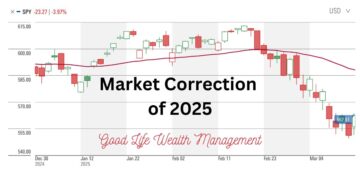We’ve passed the mid-year point and the market has had a strong performance in the first half of 2017. Investors should be very pleased with the results of the past six months, although I believe there are reasons to be guarded going forward. Our portfolio models all notched positive returns, but our value oriented approach held back returns relative to our benchmarks.
Looking first at stocks, our global equity benchmark, the MSCI All Country World Index (iShares ticker ACWI) produced a total return of 11.92%. That would be a great return for the whole year, and it’s only July 1 as I write this. US Stocks, such as the Russell 1000 Index (iShares ticker IWB) were up 9.15% in the first half.
Across the board, international stocks were well ahead of US Stocks, with both Developed and Emerging Markets producing 15% returns for the first half. Our International and Emerging small caps did even better, over 17%. Our positions in foreign equities were strong contributors to our portfolio returns. If you are just investing in domestic stocks, you really missed out so far in 2017. And International stocks remain less expensive than US stocks by most measures.
Our holdings in US Value stocks lagged, gaining only 2-4% versus the 9% of the overall market. Last year, Value outperformed both Growth and Core by a wide margin. For 2017, a handful of technology companies are dominating returns, specifically the so-called FAANG stocks: Facebook, Apple, Amazon, Netflix, and Google (now called Alphabet).
While these companies continue to post exciting growth, the price of these stocks is now incomprehensible to me. It feels like 1999 all over again, when there was no price too high for growing tech leaders. While I think that today’s top stocks are bonafide companies with genuine earnings, I still can’t justify the price of the shares.
It smells like a bubble to me, although limited to this small number of stocks. Now that doesn’t mean that we are necessarily on the verge of a collapse. Indices could continue to go higher from here, and even if a few high flyers do get clipped, that doesn’t mean that the rest of the economy will be in trouble.
Our investment process favors patience. We focus our portfolios towards the cheaper segments of the market which have lagged. We look for reversion to the mean, investing as contrarians, rather than chasing momentum. Our value funds and REIT ETF had positive returns, but were detractors from performance, as was our allocation to Alternatives. However, I remain committed to these positions because they are relatively cheap. While they did not beat the market over the past 6 months, our rationale for holding them has only grown more compelling.
In fixed income, the US Aggregate Bond Index (iShares ticker AGG) was up 2.40% year to date. Our fixed income allocations were ahead of AGG by 30 to 80 bps, with higher yields and lower duration. Our position in Emerging Market bonds was a standout performer for the half. I continue to keep a close watch on high yield bonds, but overall think we are well positioned for today’s economy and potential future rate hikes.
I write about the markets twice a year, and not more frequently, to not distract us from sticking to a long-term allocation. We focus on what we know works over time: diversification, keeping costs low, using index funds for core positions, and tilting towards value. Our discipline means that we don’t let short-term events pull us away from our strategy.
Looking at the first half, our fixed income and international equity holdings did quite well. Our value and alternatives holdings have not yet had their day in the sun. However, if the market does eventually realize that the US tech stocks have gotten “irrationally exuberant”, I think we will be glad we have our more defensive positions.







